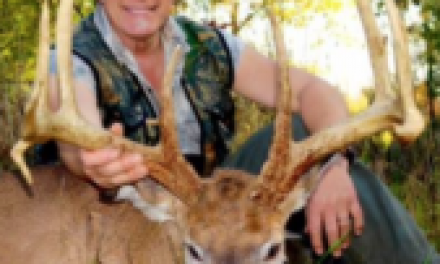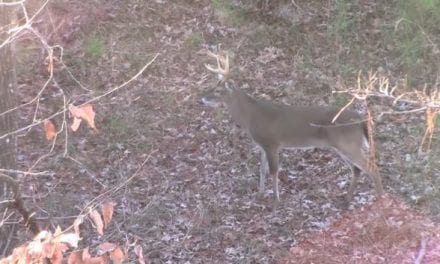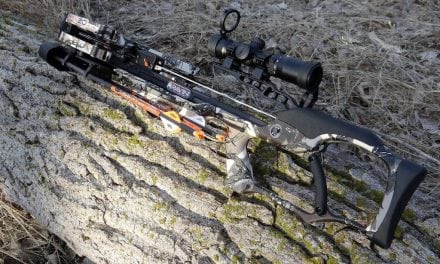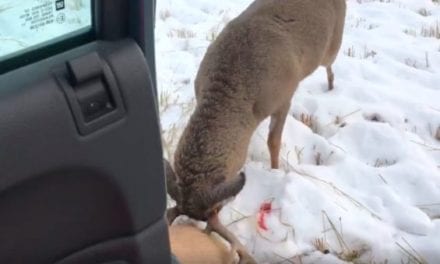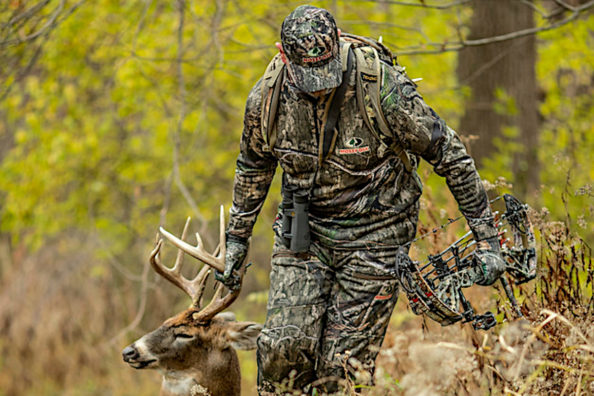
These simple mistakes will ruin a hunting spot in a hurry.
Each hunting season many hunters will ruin their chances at mature bucks through simple, yet avoidable mistakes. Some of these mistakes are rookie goofs made the first time they head out hunting. Others can be made by even the most seasoned hunter when they’re blinded by the pursuit of that big buck.
We’ll run down some of these common deer hunting mistakes and the ways you can avoid them this year.
These are simple mistakes made by far too many hunters year after year. Some hunters simply do not realize they are undermining their own hunting efforts every season when they do them.
Hunting a stand too much
This one applies whether you hunt public land or private land. The more hunting pressure you add to a spot, the more scent you leave behind and the quicker the deer catch on to what you’re doing. It doesn’t matter how much scent control you use on your camo clothing. The deer will pick up on this if you are in the same treestand day after day all season long.
It’s important to have multiple stand locations and to rarely hunt a single location on consecutive days. While it’s true that you CAN shoot a deer your second day in the same stand, your odds are never as good that second day as they are on the first.
Establish multiple locations, especially during bow season. Hunt them sparingly and only when the wind is perfect, and you’ll notice a lot more deer sightings this year.
Improperly changing travel routes
Hinge cutting is one of the most popular ways for deer hunters to alter deer traffic on their land. It is increasingly becoming a serious wildlife management tool for the serious sportsman or woman. Selectively cutting trees to create new deer trails and travel corridors between bedding areas and food sources can also help to create the perfect stand sites for bowhunters.
But you’ll want to be careful in how you conduct your hinge cuts. Cut the wrong trees and you might accidentally change major trails into exit routes that will have the deer crossing the property line to the neighbors.
Many hunters also use hinge cutting to establish bedding and cover in their hunting area. You need to think strategically before setting one of these up. And be careful of felling too many trees, or you’ll just create an area the deer will avoid.
Do your research ahead of time. Then go out to your hunting spot and think about how you’re altering your property before you even make the first cut. Don’t rush anything. In many cases, it doesn’t hurt to hire an expert consultant to look at your property and make recommendations either.
Too many hunters on one property
We get it. It’s tough to find a place to deer hunt on private land these days. If you own your own land, that’s a big deal.
You probably have a lot of friends and family members asking if they can come out and hunt with you. It’s hard to turn someone away, but many a good hunting property has been ruined by people who don’t know how to say no.
Every hunting property has a saturation point. What exactly that point is will vary from property to property based on things like the amount of wooded area, the number of food plots and prevalence of impassable areas like ponds or swamps. If you only have 100 acres, you probably don’t want more than two or three hunters sharing the area. Otherwise, you’re going to run out of spots to hunt fast.
You may have to make some difficult decisions this deer season, but the hunting improves overall when you limit the amount of pressure.
Invading sanctuary areas
One of the easiest ways to ruin a prime whitetail property is to invade a sanctuary bedding area. Deer are sensitive and they have a need for safe spaces, especially during the rut or when the hunting pressure is high. If you have a bedding area on your property, stop going into it, and make sure others hunting with you don’t enter it either.
When the deer realize there’s a spot on your property where no hunters ever enter, they’ll start to spend more time on your place, giving you more opportunities to ambush them moving to or from these areas.
Some pros will say sanctuary areas should be avoided all year-round and not just during hunting season. It may be excruciating to not know what’s going on in there, but you’ll understand why the pros swear by it when your sightings of mature bucks increase tenfold this season.
Too much non-hunting traffic
There are some things you must do on your property. You must maintain the vegetation around your stands. You must clear fallen trees that are blocking your trails. If you want to keep deer on your food plots, you need to work them each season.
But aside from the needed maintenance, you should keep all non-hunting traffic to a minimum. This means less target shooting, less camping, less fishing and less bonfires near where you hunt.
The reason is simple, and this goes back to what we said about the sanctuary areas earlier. Which property do you think the deer are going to choose to spend their time on: Property A that has regular four-wheeler traffic crossing it, or Property B that has none?
This also applies to checking trail cameras. I know how exciting checking trail cams can be, but if you’re out there once a week, you’re likely to drive deer right off the property. I go one to two months between checks on mine. That first wait of the summer is always a long one, but it’s totally worth it when you pop the card in the computer and see tons of buck photos.
Using the wrong calls and scents at the wrong time
Nothing raises a giant banner to deer saying: “I’m hunting you!” like improper use of scents and calls. Clashing together a gigantic pair of shed antlers in early September archery season in a heavy pressure state like New York or Michigan is going to raise a huge red flag for many deer. For the smarter, larger bucks, it may even push them off the property for the rest of the bowhunting season.
Likewise, using a decoy or grunt at the wrong time will set alarm bells ringing in many deer’s heads. Stuff like doe estrus scents are always going to be most effective in that restless chase phase many bucks go through right before the rut and the rut itself. They lose their effectiveness in late and early season when food are the primary things on their minds.
Another big issue is calling too aggressively. Have you ever heard a deer grunt for real in the wild? You might be surprised by how subtle and low it sounds.
Grunting loud enough for someone to hear you 300 yards away is going to be incredibly unnatural to many deer, and it will alert them you’re out there hunting them.
Be subtle with your calls and attractants, and only use them when the timing is perfect based on wind and moon phases.
Products featured on Wide Open Spaces are independently selected by our editors. However, when you buy something through our links, we may earn a commission.
For more outdoor content from Travis Smola, be sure to follow him on Twitter and check out his Geocaching and Outdoors with Travis YouTube channels.
NEXT: HOW TO CREATE AND HUNT A DEER FUNNEL (AND LEAD THEM STRAIGHT TO YOU)
WATCH
The post 5 Common Mistakes That Ruin a Deer Hunting Spot appeared first on Wide Open Spaces.












